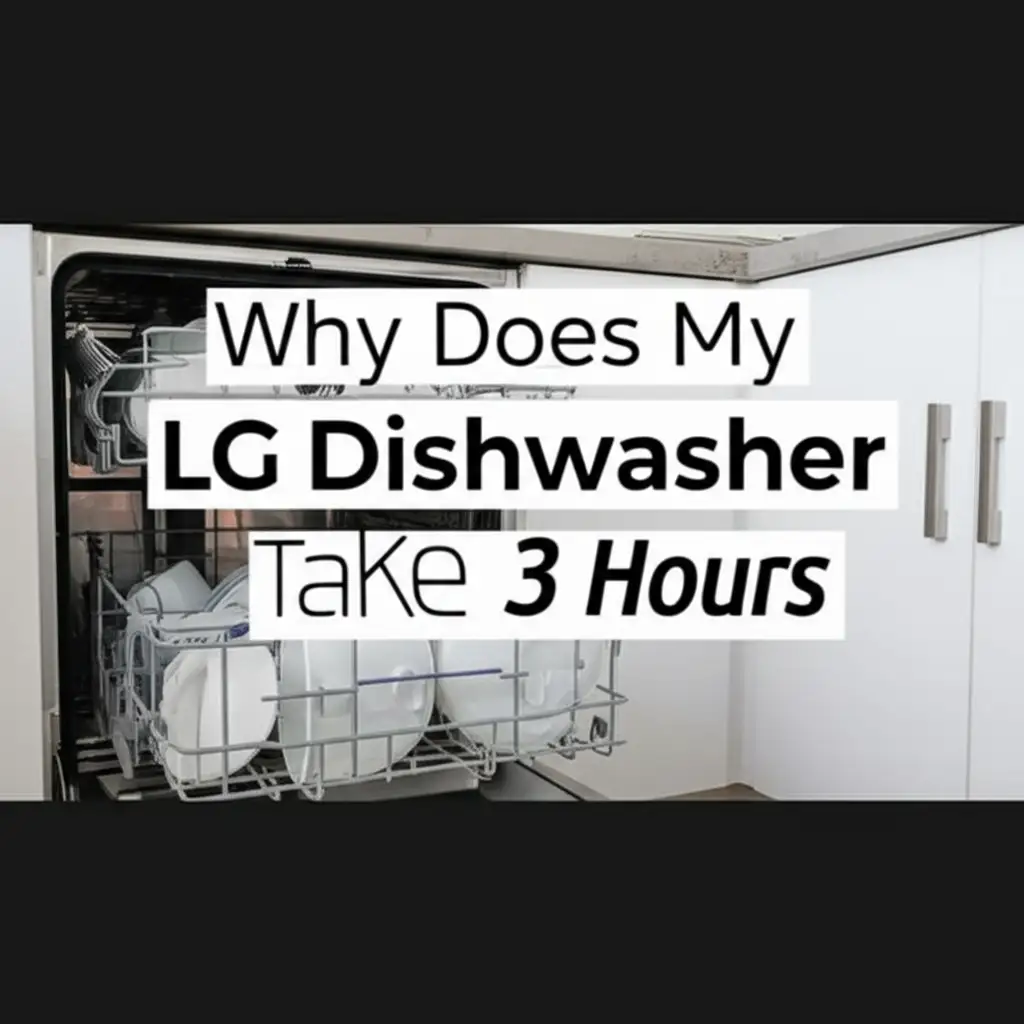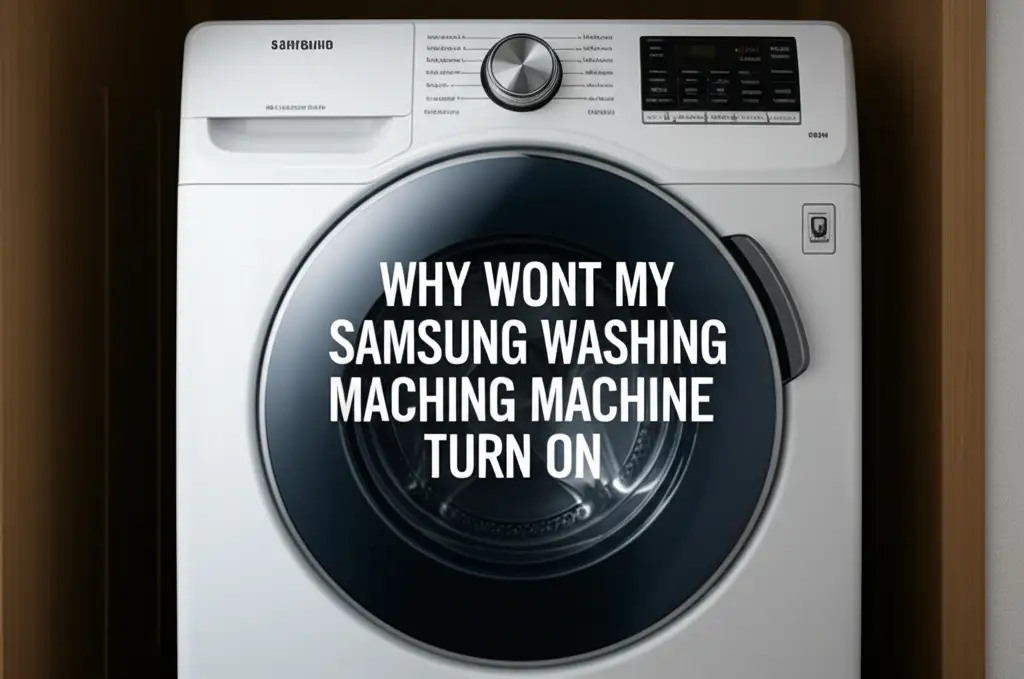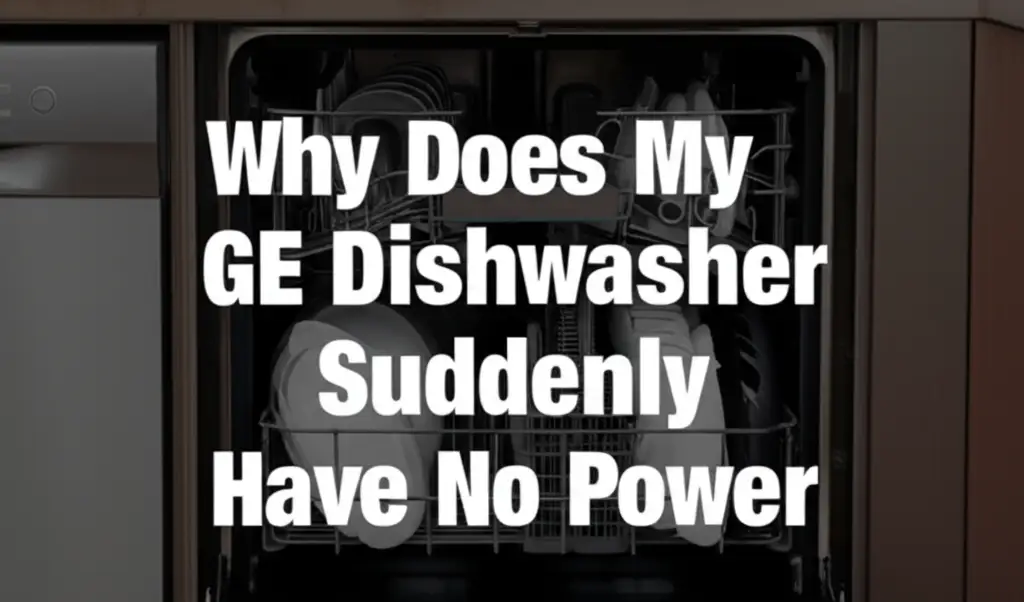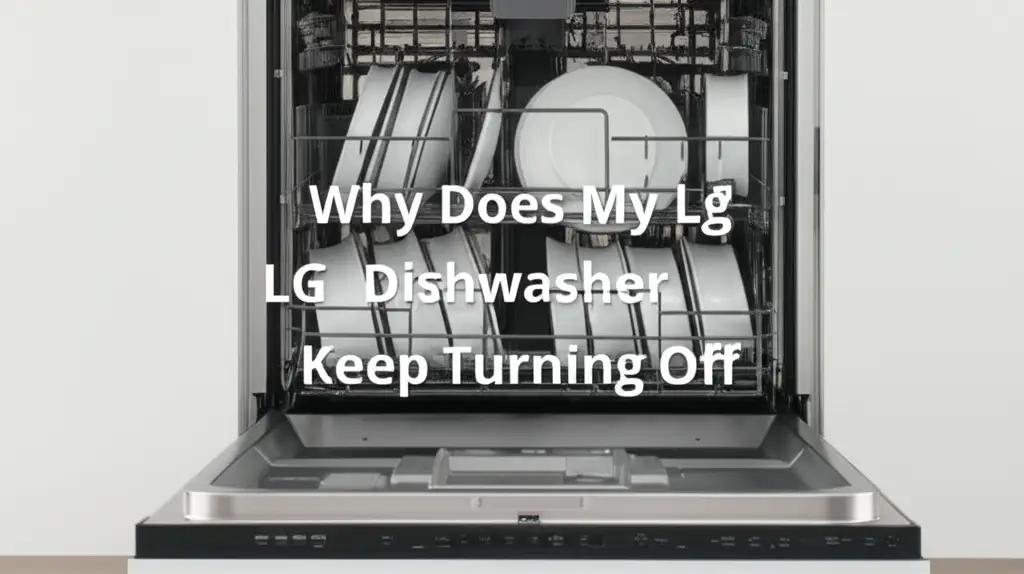· Todd Martin · Home Appliances · 21 min read
Why Did My Ge Dishwasher Just Stopped Working
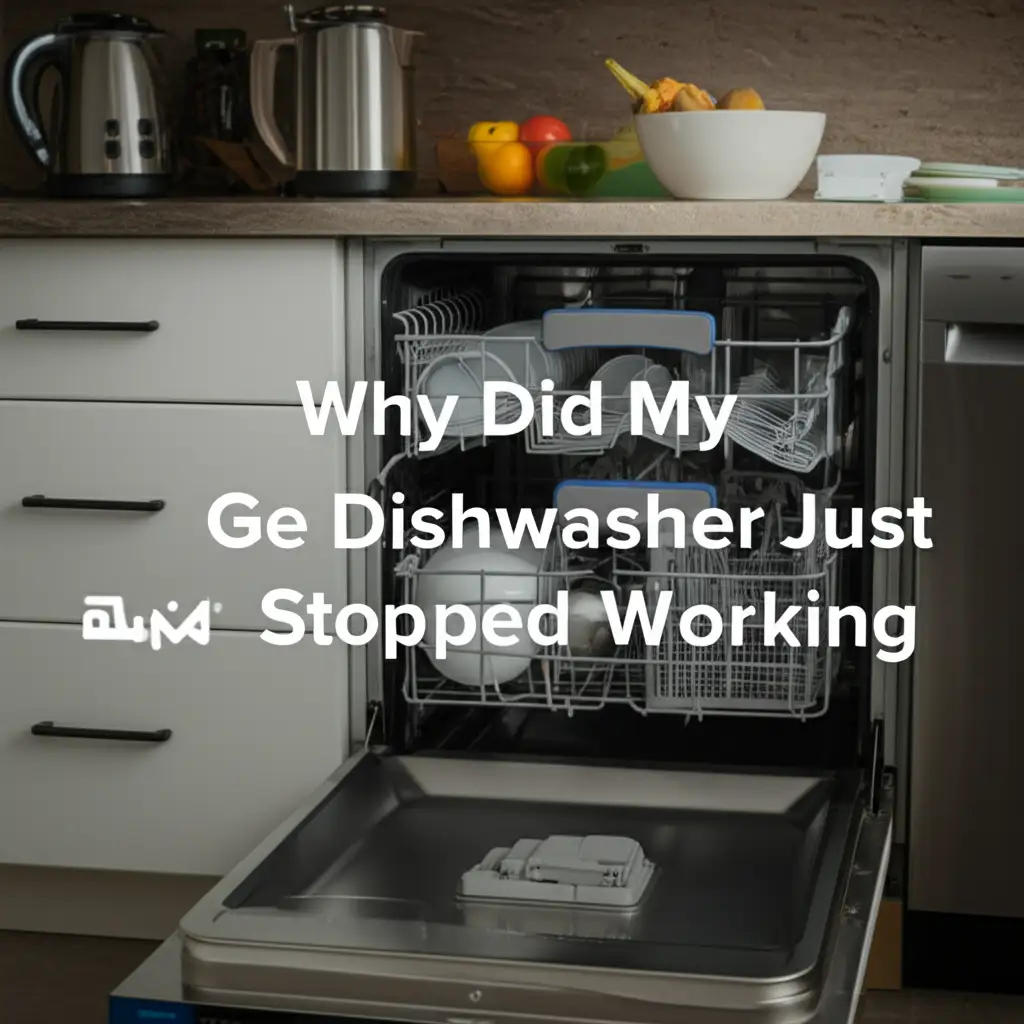
Troubleshooting Why Your GE Dishwasher Stopped Working
It is frustrating when your GE dishwasher suddenly stops working. One moment it cleans dishes, the next it is silent. This common appliance problem can disrupt your daily routine. Many people experience a sense of helplessness when this happens. But you can often find the reason and fix it yourself.
This guide helps you understand why your GE dishwasher might have stopped working. We will explore common issues from power problems to clogged filters. You will learn easy steps to diagnose the issue. We also provide clear instructions for simple repairs. By the end, you will know whether a quick fix is possible or if you need professional help. Let’s get your kitchen back in order.
Takeaway
- Check power supply, including the circuit breaker and outlet.
- Inspect the door latch for proper closure and function.
- Clean the dishwasher filter regularly to prevent clogs.
- Verify water supply is reaching the dishwasher.
- Reset the control panel to clear minor glitches.
Your GE dishwasher stops working due to various reasons. These include power supply interruptions, a faulty door latch, clogged filters, issues with the water inlet, or problems with the control board. Basic troubleshooting can often resolve these common malfunctions, restoring your appliance.
Initial Checks and Power Issues
When your GE dishwasher stops working, the first step involves checking its power supply. This is a very common reason for any appliance to fail. You need to ensure the dishwasher gets electricity properly. Without power, no part of the machine can operate.
Verify Power Supply
First, look at the circuit breaker. Your dishwasher connects to a dedicated circuit. Find your home’s main electrical panel. Locate the breaker labeled for your kitchen or dishwasher. Sometimes, this breaker simply trips. A tripped breaker sits between the “on” and “off” positions. Flip the breaker completely off, then firmly flip it back to the “on” position. This can restore power immediately.
Next, check the electrical outlet. If your dishwasher plugs into a wall outlet, ensure the plug sits firmly. Sometimes, the plug can become loose. Test the outlet with another small appliance, like a phone charger or a lamp. If the other appliance does not work, the outlet itself might have a problem. This might require an electrician.
Inspect the Door Latch
A GE dishwasher will not start if its door is not fully closed and latched. The door latch has a safety switch. This switch prevents water from spraying out during operation. If the latch is broken or misaligned, the dishwasher’s internal system thinks the door is open. The machine will not start any cycle.
Visually inspect the door latch assembly. Look for any visible damage. Ensure nothing blocks the latch mechanism. Sometimes, a piece of food or a utensil gets stuck. Close the dishwasher door firmly. You should hear a distinct click as it latches. If the door feels loose or does not click, the latch might need adjustment or replacement.
Reset the Control Panel
Just like computers, dishwashers can experience temporary electronic glitches. A simple reset often clears these issues. Power cycling your GE dishwasher can solve many problems. To do this, turn off the circuit breaker that supplies power to the dishwasher. Wait for about 5 minutes. Then, turn the circuit breaker back on. This process drains any residual electrical charge from the control board. It can reset the internal computer. After the reset, try to start a wash cycle again. If your GE dishwasher control panel is not working, a reset is a good first step. For more specific issues with the control panel, you can refer to Why is my GE dishwasher control panel not working.
Water Supply Problems
A dishwasher needs a continuous water supply to operate. If your GE dishwasher stopped working, it might be due to issues with water getting into the unit. Without water, it cannot wash dishes or even begin a cycle. These problems often have simple solutions.
Verify Water Inlet Valve
The water inlet valve controls water flow into the dishwasher. This valve opens to let water in during the fill cycle. If the valve is faulty, it will not open. As a result, the dishwasher will not fill. You might hear a humming noise if the valve tries to open but fails.
First, check the water supply line connected to the dishwasher. This line usually connects to the hot water pipe under your sink. Ensure the shut-off valve on this line is fully open. Sometimes, it gets accidentally turned off. If the valve is open, the water inlet valve itself might be clogged or defective. Mineral deposits can build up over time. This prevents the valve from opening properly. Replacing a faulty water inlet valve usually requires professional help, but checking the water supply first is crucial. You can find more details on water filling issues at Why is my GE dishwasher not filling with water.
Inspect Supply Line Kinks or Blockages
The water supply line carries water from your home’s plumbing to the dishwasher. This hose can develop kinks or blockages. A kink in the hose restricts water flow. This means not enough water reaches the dishwasher. A blockage, like sediment buildup, also prevents proper water intake.
Pull the dishwasher out slightly to access the hose. Look behind the unit for any visible kinks or bends in the flexible water supply line. Gently straighten any kinks you find. If the line appears clear, but water still does not enter, there might be an internal blockage. This might require disconnecting the line to inspect it. Remember to turn off the water supply before disconnecting any lines.
Check the Float Switch
Many dishwashers have a float switch. This safety device prevents the dishwasher from overflowing. It is usually located at the bottom of the dishwasher tub. It looks like a small plastic cup or disc. When water fills the tub, the float rises. Once it reaches a certain level, the float activates a switch. This signals the dishwasher to stop filling.
If the float switch gets stuck in the “up” position, the dishwasher will not fill. It thinks it is already full of water. Debris, such as food particles or soap residue, can cause the float to stick. Gently press down on the float to ensure it moves freely. Clean any visible debris around its base. If the float does not move easily or seems broken, it might need replacement. A malfunctioning float switch prevents the wash cycle from starting.
Drainage and Clogging Issues
A dishwasher needs to drain properly to complete its cycle. If your GE dishwasher stopped working, it might be stuck because of a drainage problem. Clogs are common issues that prevent water from leaving the tub. This signals the dishwasher to halt operations.
Clean the Dishwasher Filter
Dishwasher filters collect food particles and debris. They prevent these items from recirculating or clogging the drain pump. Over time, these filters can become heavily soiled. A dirty filter restricts water flow, leading to poor cleaning or drainage issues. Many modern GE dishwashers have self-cleaning filters. Older models require manual cleaning.
Locate the filter at the bottom of your dishwasher tub. It usually consists of two parts: a coarse filter and a fine mesh filter. Twist and lift them out according to your GE model’s manual. Rinse them thoroughly under warm running water. Use a soft brush to remove any stubborn food particles or grease. Clean the area around where the filters sit as well. A clean filter ensures proper water circulation and drainage. For older GE models, learning how to clean filter in old GE dishwasher is essential maintenance.
Inspect the Air Gap
Some dishwashers use an air gap. This small cylinder is often mounted on the countertop near the sink. It connects the dishwasher drain hose to the garbage disposal or sink drain. The air gap prevents dirty water from flowing back into the dishwasher. If the air gap gets clogged, water cannot drain properly from the dishwasher.
Check the air gap for blockages. Remove the chrome cover and the inner cap. Look inside for food debris or grease buildup. Clear any visible obstructions. You can use a thin wire or a screwdriver to dislodge clogs. Run your sink’s garbage disposal if you have one. This helps clear any clogs in the drain line connected to the air gap. A clear air gap ensures smooth drainage.
Check the Drain Hose
The drain hose carries wastewater from the dishwasher to the sink drain or garbage disposal. This hose can become kinked, clogged, or pinched. A kinked hose restricts water flow. A blockage from food debris or grease inside the hose also stops drainage.
First, visually inspect the drain hose behind the dishwasher. Ensure it is not kinked or crimped. If it connects to a garbage disposal, make sure the knockout plug inside the disposal inlet was removed during installation. If this plug is still present, the dishwasher cannot drain. Disconnect the drain hose from the disposal or sink drain. Check for any blockages inside the hose. You can use a flashlight to look through it or try to push a thin wire through. If the hose is severely clogged, replacing it might be necessary. Sometimes, a drain issue can even lead to leaks, as discussed in Why is my GE dishwasher leaking from the bottom.
Examine the Drain Pump
The drain pump removes water from the dishwasher at the end of a cycle. If the drain pump fails, water will sit in the bottom of the tub. This prevents the dishwasher from advancing to the next cycle or starting a new one. You might hear a humming noise but no draining action. Or, you might hear nothing at all.
Accessing the drain pump usually requires disconnecting the dishwasher from power and water lines. Then, you pull the unit out. The pump is typically located under the tub. Look for foreign objects, like broken glass or small pieces of plastic, jamming the impeller. Clear any obstructions carefully. If the pump impeller spins freely but still does not drain, the motor might be faulty. A multimeter can test the pump’s electrical continuity. Replacing a drain pump is a more advanced repair.
Motor and Pump Malfunctions
Your GE dishwasher relies on its motor and pump systems to clean dishes effectively. If these components fail, the dishwasher stops working entirely or performs poorly. Understanding their function helps in diagnosing the issue.
Circulation Pump Issues
The circulation pump, also known as the wash pump, moves water through the spray arms. This pump creates the necessary pressure for effective cleaning. If the circulation pump fails, water will not spray inside the dishwasher. You might hear the dishwasher fill with water, but then it goes silent. The motor might hum but not spray.
A common issue is a foreign object jamming the impeller. Small pieces of food, glass, or plastic can get past the filter and obstruct the pump. Turn off power to the dishwasher before checking. You might need to remove the lower spray arm and potentially the pump housing to access the impeller. Carefully remove any obstructions. If no jam is present, the motor windings might be burnt out. Or, the pump’s capacitor might be faulty. These issues typically require replacement of the pump assembly.
Wash Motor Problems
The wash motor is the heart of the circulation system. It powers the circulation pump. If the wash motor fails, the dishwasher will not be able to spray water. You might hear a brief hum or click, then silence. Or, the dishwasher might fill with water but never begin the wash action.
Diagnosing a wash motor problem often involves checking its electrical connections. A loose wire could be the cause. Using a multimeter, you can test the motor for continuity. If there is no continuity, the motor is likely bad. Overheating or continuous strain can cause motor failure. A burnt-out motor will need replacement. This is a more involved repair. It may be best handled by a professional technician.
Humming but No Action
Sometimes, your GE dishwasher might hum but not start its cycle. This humming often indicates that the motor or pump is receiving power but cannot complete its operation. It suggests a mechanical obstruction or a component struggling to function.
As mentioned before, a foreign object jammed in the pump impeller is a common culprit. The motor tries to spin but cannot. This creates the humming noise. Another possibility is a seized motor bearing. The motor receives power but cannot rotate freely. A faulty starting capacitor for the motor can also cause this. The capacitor provides an initial burst of power to get the motor spinning. If it fails, the motor only hums. For these specific issues, disassembling the lower part of the dishwasher is often necessary. Carefully inspect the motor and pump areas for any physical obstructions. If you cannot find a clear obstruction, the motor or capacitor likely needs replacement.
Electronic Control Board and Sensors
Modern GE dishwashers rely heavily on electronic components and sensors. These parts manage every aspect of the wash cycle. If any of these critical components malfunction, your dishwasher will stop working. They can cause the machine to behave erratically or become completely unresponsive.
Control Board Failure
The control board is the “brain” of your GE dishwasher. It receives input from sensors and sends commands to various components like the motor, pumps, and valves. A faulty control board can cause a wide range of problems. Your dishwasher might not start at all. It might stop mid-cycle. Or, it might display error codes. Sometimes, the control panel lights might flicker or remain unlit.
Control board failure can happen due to power surges, age, or manufacturing defects. There are often no visible signs of damage on the board itself. You can try a hard reset first, as mentioned earlier. If the problem persists, the control board might need replacement. This is an expensive repair. It often requires a professional technician. They can properly diagnose the board’s condition and install a new one.
Thermal Fuse Failure
Many dishwashers include a thermal fuse. This is a safety device. It protects the dishwasher from overheating. If the dishwasher’s internal temperature gets too high, the thermal fuse will blow. This cuts power to the entire unit. It prevents damage to components or a fire hazard. Once the thermal fuse blows, the dishwasher will not power on at all.
A blown thermal fuse indicates an underlying heating problem. This could be a faulty heating element. Or, it could be a circulation issue. Simply replacing the fuse without addressing the root cause will lead to the new fuse blowing quickly. You can test the thermal fuse for continuity with a multimeter. A reading of “no continuity” means the fuse is blown. Locate the fuse, often near the control panel or heating element. Replace the fuse, but also investigate why it blew.
Other Sensors
Dishwashers use various sensors to monitor water levels, temperature, and turbidity (water cleanliness). If any of these sensors malfunction, the control board receives incorrect information. This can cause the dishwasher to stop working or prevent it from starting.
- Water Level Sensor (Float Switch): As discussed, a float switch monitors water levels. If it sticks or fails, the dishwasher might not fill or could overfill.
- Temperature Sensor (Thermistor): This sensor monitors water temperature. If it gives an inaccurate reading, the dishwasher might not heat water. This can prevent it from progressing through the wash cycle.
- Turbidity Sensor: Some high-end GE models have a turbidity sensor. It detects how dirty the water is. This helps adjust cycle length and water usage. A faulty turbidity sensor might cause the dishwasher to stop working prematurely. Or, it might run for an unusually long time.
Diagnosing sensor failures often requires a multimeter and the dishwasher’s service manual. The service manual usually provides resistance values for properly functioning sensors. Testing and replacing sensors can be a delicate task. This is especially true for those embedded within other components.
Less Common but Critical Failures
While power and clogs cause most GE dishwasher issues, other critical problems can also stop your appliance. These issues are less frequent but can be complex. They may require more advanced troubleshooting.
Detergent Dispenser Problems
A detergent dispenser failure can prevent a wash cycle from properly initiating or completing. While the dishwasher might power on, it can get stuck if the dispenser does not open. The control board expects a signal that the detergent has been released. If it does not receive this, the cycle might pause indefinitely.
The dispenser typically opens using a small motor or a wax motor. Food debris or hard water deposits can jam the dispenser door. Visually inspect the dispenser. Ensure no debris blocks the door. You can also manually open and close the door to check for smooth operation. If the door does not open during a test cycle, the dispenser assembly might be faulty. This involves replacing the dispenser unit itself.
Heating Element Failure
The heating element is responsible for heating the water during the wash cycle. It also heats the air during the drying cycle. If the heating element fails, your dishes will not get properly cleaned. The dishwasher might stop mid-cycle if it cannot reach the required water temperature.
Signs of a faulty heating element include cold water during the wash cycle or wet dishes after drying. You can test the heating element for continuity using a multimeter. It is usually located at the bottom of the dishwasher tub. A lack of continuity indicates a blown element. Replacing the heating element is generally straightforward. However, it requires careful handling of electrical connections. Remember to always disconnect power before performing any electrical checks or repairs.
Motor Seal Leak
While not directly stopping the dishwasher from working, a motor seal leak can cause significant issues. If the seal around the circulation pump motor fails, water can leak onto the motor. This can cause the motor to short circuit. A shorted motor will often prevent the dishwasher from starting at all. It may trip a circuit breaker.
Look for signs of water leakage around the bottom of the dishwasher. You might see rust stains or water puddles. If you suspect a motor seal leak, it requires professional attention. Continuing to operate the dishwasher with a leak can cause further electrical damage. It can also lead to water damage to your floor.
Damaged Wiring or Connections
Inside your GE dishwasher, numerous wires and connections power its components. Over time, these wires can become frayed, corroded, or disconnected. Rodents can also chew through wiring. A damaged wire can interrupt power to a specific component. This stops the dishwasher from working.
If your dishwasher suddenly stops with no clear cause, a wiring issue might be present. Check visible wire harnesses for signs of damage or loose connections. Pay attention to connections leading to the control board, motor, and heating element. Repairing damaged wiring can be complex and potentially dangerous. Always disconnect power before inspecting wiring. If you find extensive damage or are unsure, a professional appliance technician should handle the repair.
When to Call a Professional
Sometimes, despite your best troubleshooting efforts, your GE dishwasher remains unresponsive. Or, you might face a problem that feels beyond your skill level. Knowing when to call a professional technician saves you time, frustration, and potential further damage to your appliance.
Complex Repairs
Many dishwasher repairs involve electrical components, water lines, or intricate mechanical parts. If the issue requires disassembling major parts of the dishwasher, it quickly becomes complex. Replacing a control board, diagnosing motor issues, or fixing internal leaks often falls into this category. These repairs need specific tools and diagnostic equipment. They also require expertise that most homeowners do not possess. Attempting a complex repair without proper knowledge can cause more damage. It can even create safety hazards.
Safety Concerns
Working with electrical appliances always carries risks. Water and electricity are a dangerous combination. If you are uncomfortable disconnecting power, handling wires, or dealing with water valves, it is safer to call a professional. Appliance technicians are trained to work safely with these systems. They follow strict safety protocols. If you notice smoke, burning smells, or signs of sparking, immediately disconnect power to the dishwasher. Then, call a professional. Do not try to fix these issues yourself.
Warranty Considerations
Check your GE dishwasher’s warranty. Many new appliances come with a manufacturer’s warranty. This covers parts and labor for a certain period. If your dishwasher is still under warranty, attempting DIY repairs might void it. This means you would pay for future repairs that would have been covered. Always check your warranty terms before starting any repair work yourself. Contact GE customer service or the retailer where you bought the dishwasher. They can guide you on warranty claims and authorized service providers.
Cost-Benefit Analysis
Before investing in a professional repair, consider the age and overall condition of your GE dishwasher. If your dishwasher is very old and has had frequent issues, the cost of a significant repair might be high. Sometimes, the repair cost approaches the price of a new, more energy-efficient model. A professional technician can provide an estimate for the repair. Use this estimate to decide if repair or replacement is the better choice for your situation. If multiple major components fail, a new appliance might be more economical in the long run.
Ultimately, your peace of mind and safety are paramount. Do not hesitate to seek professional help. A qualified technician can quickly diagnose the problem. They can efficiently perform the necessary repairs.
FAQ Section
Q1: My GE dishwasher hums but does not start. What does that mean?
A humming noise usually indicates that the motor receives power but cannot spin. This often points to a jammed circulation pump impeller. Foreign objects like glass shards or food debris can get stuck. Turn off power, then check the pump area for obstructions. A faulty motor capacitor or seized motor bearings can also cause humming without action.
Q2: Why does my GE dishwasher have power but still won’t start a cycle?
If your GE dishwasher has power but won’t start, check the door latch. It must be fully closed and latched. Also, inspect the control panel. It might be locked or need a reset. Issues with the water inlet valve or float switch can also prevent starting. The dishwasher will not proceed if it cannot detect water filling.
Q3: How do I reset my GE dishwasher?
To reset your GE dishwasher, simply turn off the circuit breaker that controls the dishwasher. Leave it off for 5-10 minutes. Then, turn the circuit breaker back on. This hard reset can clear electronic glitches. It often restores normal function. Some models also have a specific button combination for a soft reset, check your user manual.
Q4: My GE dishwasher fills with water but does not wash. What’s wrong?
When your GE dishwasher fills but does not wash, the problem likely lies with the circulation pump or its motor. The pump is responsible for spraying water through the spray arms. A jammed impeller, a faulty pump motor, or a broken wash arm diverter can cause this. Listen for the sound of spraying water; if silent, the pump system is the issue.
Q5: Can a clogged filter really stop my GE dishwasher?
Yes, a severely clogged filter can indeed stop your GE dishwasher. If the filter is full of food particles and debris, it restricts water flow. This impacts both water circulation and drainage. The dishwasher’s sensors may detect poor performance or a drainage issue and halt the cycle. Regularly cleaning the filter is crucial for proper operation.
Q6: How often should I clean my GE dishwasher filter?
You should clean your GE dishwasher filter regularly. For typical use, inspect and clean the filter once a month. If you wash dishes with heavy food scraps frequently, clean it more often. Many modern GE models have self-cleaning filters, but even those benefit from occasional manual checks. Cleaning prevents clogs and ensures efficient operation.
Conclusion
A GE dishwasher that suddenly stops working can be a major inconvenience. But many common causes have straightforward solutions. You now understand the key areas to investigate. We covered basic power checks, inspecting the door latch, and resetting the control panel. We also explored water supply issues, from the inlet valve to float switches. Drainage problems, like clogged filters or drain pumps, are also common culprits. Remember, motor and pump malfunctions, alongside electronic issues like a faulty control board or thermal fuse, can also stop your GE dishwasher.
By following these troubleshooting steps, you can often identify and resolve the problem yourself. This saves you money and time. Always prioritize safety. Disconnect power before touching any internal components. If the repair seems too complex, involves high voltage, or you are unsure, do not hesitate to contact a qualified appliance technician. Their expertise ensures a safe and effective repair. Getting your GE dishwasher back to full operation means your kitchen routine can return to normal.
- GE dishwasher repair
- dishwasher troubleshooting
- appliance not working
- dishwasher fixes
- DIY appliance repair


